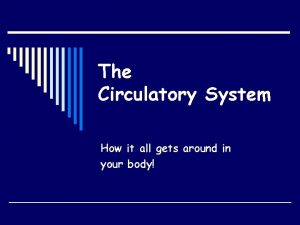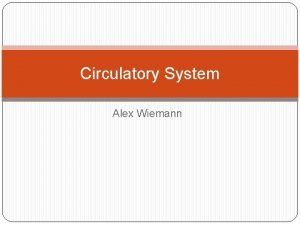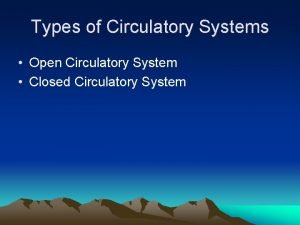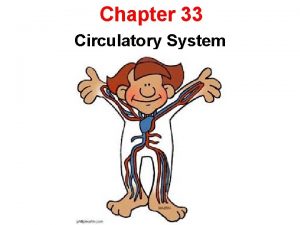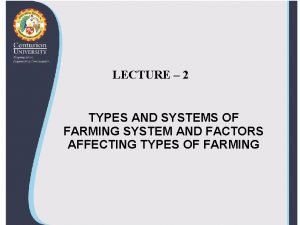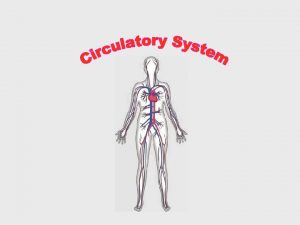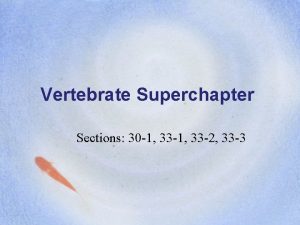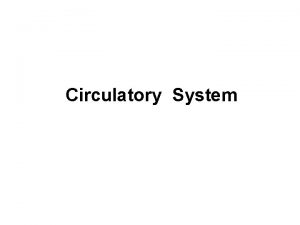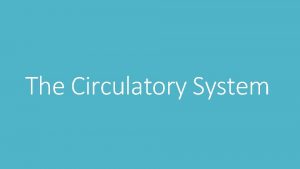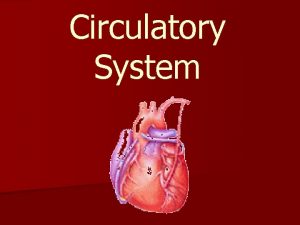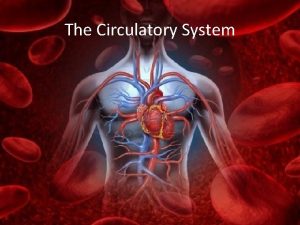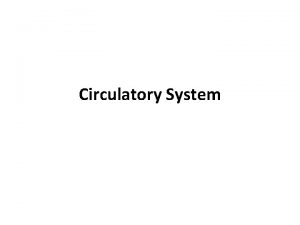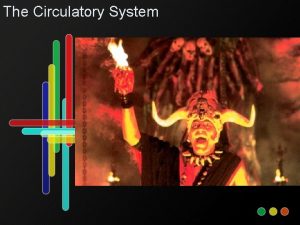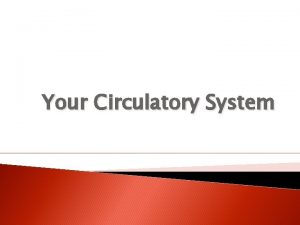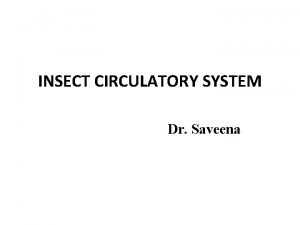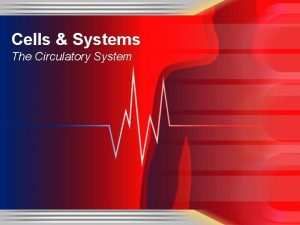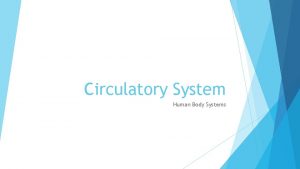Circulatory System Types of Circulatory Systems There are












- Slides: 12

Circulatory System

Types of Circulatory Systems • There are two types of transport in animals: open and closed. • Closed circulation is what most mammals and vertebrates have. Here, the blood is carried within blood vessels, such as veins and arteries. • An open circulatory system is possessed by grasshoppers and some other insects, and results in blood bathing cells directly, exchanging materials while making contact with the cell.

Key Terms Blood vessel – any type of tube that carries blood through the body Artery – a type of vessel that only carries blood away from the heart Vein – a type of vessel that only carries blood toward the heart Capillary – branching off arteries, these are vessels that carry blood to the body and also undergo gas exchange with body cells • Chamber – any one of four major sections of the heart, divided into right and left sides, atria and ventricles • •

Human Circulation • Blood that is low in O 2 and high in CO 2 enters the heart through the right atrium. More specifically, blood enters the right atrium through the superior vena cava and the inferior vena cava, two large veins leading into the heart from above and below.

• The blood is forced into the right ventricle due to contraction of the right atrium. • The right ventricle contracts, pushing blood into the pulmonary artery. Branches of this artery lead to capillaries in each lung where blood picks up O 2 and gives off CO 2.

• After leaving the lungs full of O 2, the blood moves to the left atrium via four pulmonary veins. As the left atrium contracts, the blood is moved to the left ventricle.

• • The left ventricle contracts and moves blood to the aorta, the largest blood vessel in the body. The aorta forms an arch that bends down behind the heart, where smaller arteries branch off of it and carry blood to the rest of the body. The arteries branch further throughout the body to form capillaries, which exchange O 2 for CO 2 with the body cells.

• These same capillaries re-merge to form the veins that lead into the vena cavas. • The blood moves between atria and ventricles through one-way valves so that oxygenated blood doesn’t mix with de-oxygenated blood.

Summary • Blood travels through the heart twice during each circulation of the body. • First, oxygen-poor blood enters the right half of the heart and moves to the lungs to pick up oxygen. • Second, oxygen-rich blood moves through the left chambers of the heart and goes to the body to give oxygen to the cells.

A Single Heartbeat • All of this happens within a single heartbeat. Each beat of the heart starts in a small bundle of tissue in the right atrium called the sinoatrial (S-A) node. The S-A node is also called the pacemaker. The contraction caused by the triggering of the S-A node forces blood from the atria to the ventricles.

• The impulse reaches another bundle called the atrioventricular (A-V) node between the atria and the ventricles. The A-V node causes an impulse that moves out and down along the muscle walls of the ventricles, making them tighten. This increases the pressure of the blood. The pressure closes the heart’s valves and opens the valves of the arteries that lead away from the heart. • The “bom-bump” that you hear when listening to a heart is the sound of the valves opening and closing.

Blood Pressure • As blood is pumped through the body, it exerts a certain amount of pressure on the walls of the vessels carrying it. • In arteries, the pressure causes the walls to bulge and then bounce back. • You feel this as a pulse.
 Mikael ferm
Mikael ferm Respiratory system circulatory system digestive system
Respiratory system circulatory system digestive system Circulatory system interactions with other systems
Circulatory system interactions with other systems Circulatory system interactions with other systems
Circulatory system interactions with other systems Types of circulatory system
Types of circulatory system Tiny air sacs at the end of the bronchioles
Tiny air sacs at the end of the bronchioles Circulatory system and respiratory system work together
Circulatory system and respiratory system work together Open circulatory system
Open circulatory system Chapter 33 section 1 the circulatory system
Chapter 33 section 1 the circulatory system Zabo cultivation definition
Zabo cultivation definition Circulatory system steps in order
Circulatory system steps in order Superchp
Superchp Circulatory system of lungfish
Circulatory system of lungfish


